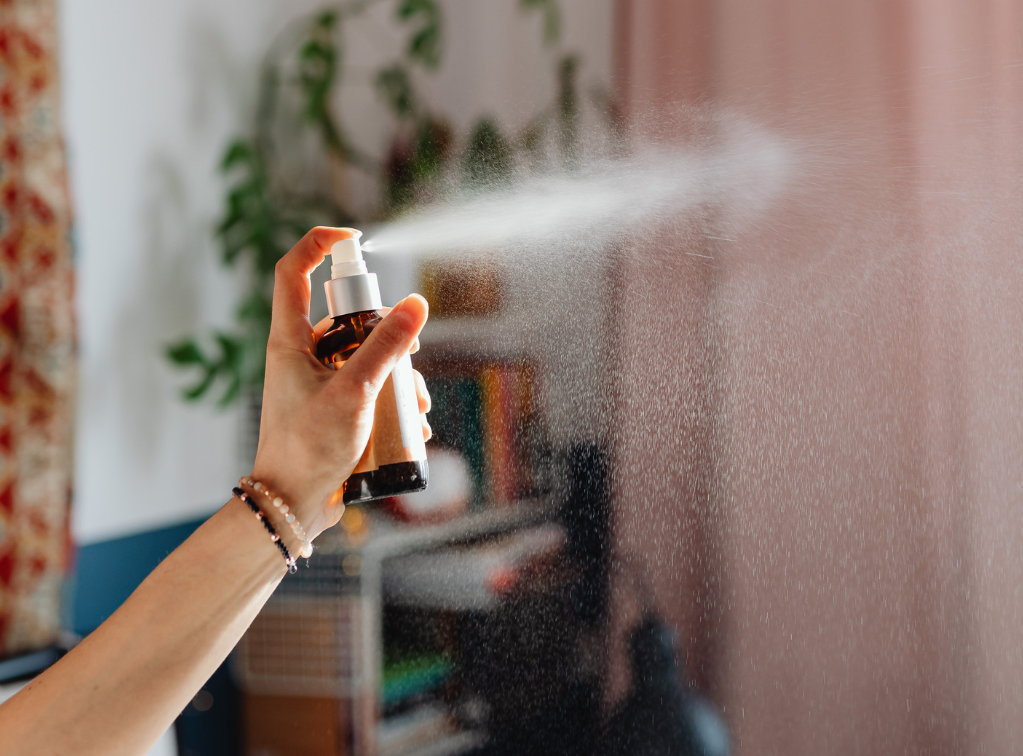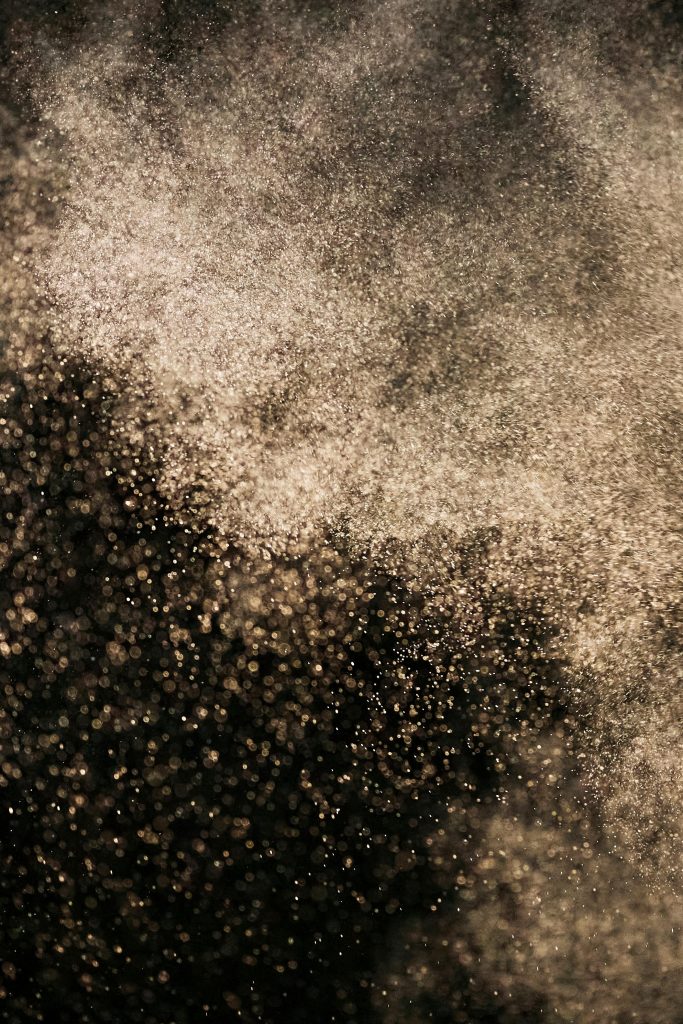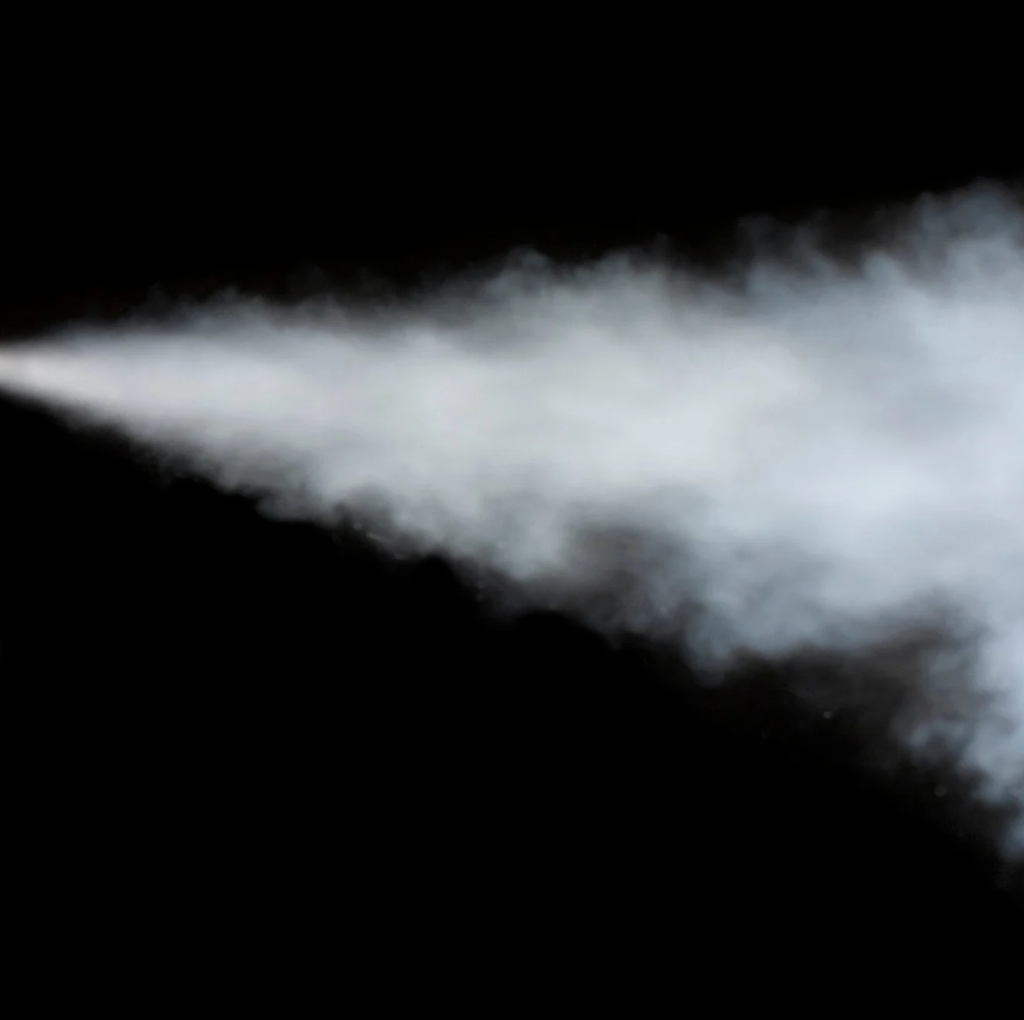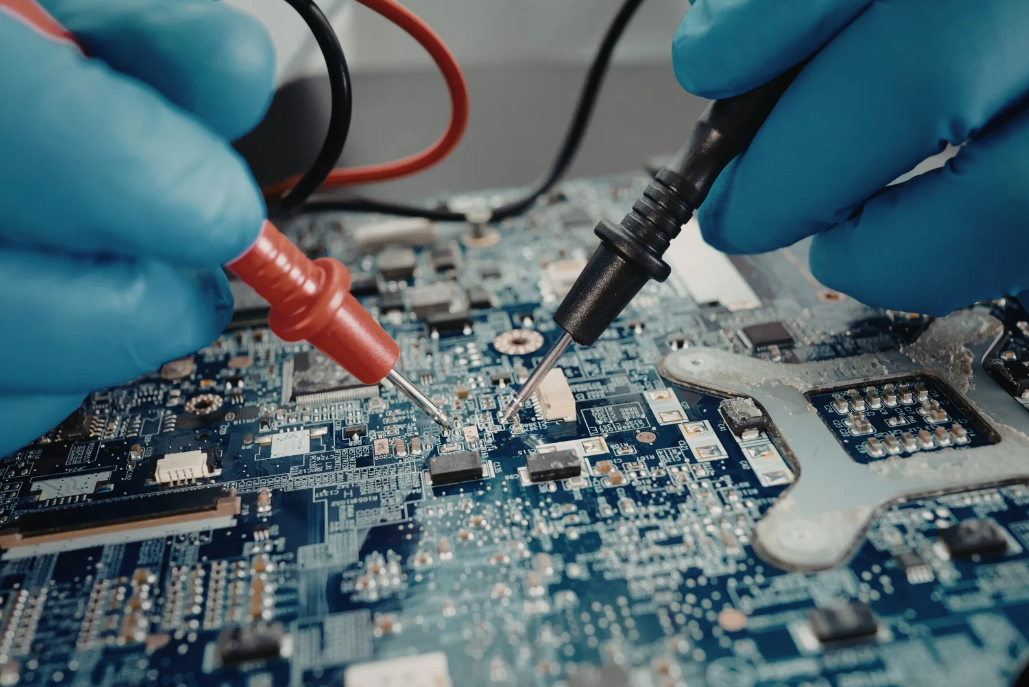Thinking about getting a better finish on your projects? Maybe you’ve heard about air atomizing spray nozzles but aren’t quite sure what makes them tick. They’re pretty common in lots of industries, from painting cars to cooling hot metals. Basically, they use air to break up liquids into tiny little drops, which is super useful for getting even coats or controlling temperatures. We’ll break down how these nozzles work, why they’re so good for different jobs, and what you need to know to pick the right one. Let’s get into it.

Key Takeaways
- An air atomizing spray nozzle uses compressed air to break liquids into fine droplets, improving coating consistency and control.
- Internal mix nozzles blend air and liquid inside the nozzle, while external mix nozzles combine them outside, offering different advantages for various liquid types.
- These nozzles are used in many ways, including precise coating, cooling products, and even fire suppression, thanks to their adjustable spray patterns.
- Choosing the right air atomizing spray nozzle involves matching it to the liquid’s properties, the desired flow rate, and the specific spray pattern needed for the job.
- Regular cleaning, checking for clogs by monitoring pressure drops, and replacing worn parts are important for keeping your air atomizing spray nozzle working its best.
Understanding Air Atomizing Spray Nozzle Fundamentals
When you need a really fine mist for coating or other industrial jobs, an air atomizing spray nozzle is often the way to go. These nozzles are pretty neat because they use compressed air to break up liquids into tiny droplets. It’s a process that’s super important for getting consistent results in lots of different industries.
The Core Principle of Atomization

At its heart, an air atomizing spray nozzle works by forcing a liquid through a small opening while simultaneously hitting it with high-speed compressed air. This air blast creates shear forces that overcome the liquid’s natural tendency to stick together, breaking it down into a fine spray. Think of it like blowing really hard across the top of a cup of water – you can get a mist to form. The speed of the air and the design of the nozzle itself are what really control how small those droplets get. This is a key aspect of how Piezo Direct technology, when integrated with NozzlePro spray nozzles, can achieve incredibly precise droplet control, allowing for very fine atomization.
Internal Versus External Mixing Techniques
There are two main ways these nozzles mix the air and liquid:
- Internal Mix: In this setup, the liquid and air streams meet and mix inside the nozzle body before they exit through a single opening. This design is often more compact. However, it’s generally best suited for liquids that are pretty thin, like water, and can have issues if the liquid gets too thick (over 200 cP). Changes in airflow can also directly affect how much liquid comes out.
- External Mix: Here, the liquid and air exit through separate openings and mix outside the nozzle. This separation means the liquid flow isn’t as directly tied to the air pressure, giving you more control. External mix nozzles are great for thicker liquids, liquids with small particles in them, and generally handle higher liquid flow rates without as much risk of clogging. They offer more flexibility for a wider range of fluids.
Key Components of an Air Atomizing Nozzle
Most air atomizing nozzles, whether they’re used for coating or as a humidification nozzle, share a few common parts:
- Air Inlet: This is where the compressed air connects to the nozzle.
- Liquid Inlet: This is where the liquid supply line attaches.
- Internal Passages: These are precisely machined channels inside the nozzle that guide the air and liquid to where they need to go.
- Liquid Orifice: This is the final opening the liquid passes through before it’s atomized.
- Air Cap: This part is really important. It has special channels and exit holes that direct the atomizing air precisely where it needs to hit the liquid stream to create the spray pattern. The design of the air cap significantly influences the shape and fineness of the spray. Getting the right air cap is vital for achieving the desired coating uniformity.
Understanding these basic parts and how they work together is the first step to selecting the right air atomizing spray nozzle for your specific industrial needs.
Achieving Superior Coating with Air Atomizing Nozzles
When you need a really consistent, even coat on something, air atomizing nozzles are pretty much the go-to. They take a liquid, like paint, lubricant, or even a seasoning, and break it down into tiny droplets using compressed air. This process is called atomization, and it’s how you get that fine mist.
Precision Coating Applications
This is where air atomizing really shines. Because you can control the droplet size and how the spray spreads out, you can apply coatings with amazing accuracy. Think about applying a thin, even layer of lubricant to a complex machine part or misting a food product with flavorings. You get coverage exactly where you want it, without overspray or waste. It’s all about getting that perfect film thickness every time.
Controlling Droplet Size and Pattern
So, how do you get that precision? It comes down to a few things. The design of the nozzle itself plays a big role, especially the air cap and the liquid orifice. The air cap has these special channels that direct the air, and the orifice is the final opening the liquid shoots through. The air pressure is also a huge factor. More air pressure generally means smaller droplets, which can be good for a finer finish. You can also change the spray pattern, like going from a round mist to a flat fan shape, which is great for covering wider areas evenly.
The interaction between the liquid’s properties, the air pressure, and the nozzle’s internal design is what allows for such fine control over the spray characteristics. It’s a delicate balance that, when dialed in, produces superior results.
Optimizing for Viscosity and Flow Rates
Not all liquids are the same, right? Some are thick and syrupy, others are thin like water. Air atomizing nozzles can handle a pretty wide range, but you need to pick the right type. For really thick liquids, you’ll want an external mix nozzle. This is because the air and liquid mix outside the nozzle, which prevents clogging and lets you use higher flow rates. Internal mix nozzles, where the air and liquid mix inside, are better for thinner liquids and generally have lower flow rates. Getting this match right is key to avoiding problems and getting the best spray quality. For instance, using NozzlePro spray nozzles allows for precise control over the liquid flow, even with challenging fluids, ensuring consistent droplet formation and spray patterns that traditional methods might struggle with.
Here’s a quick look at how viscosity can influence nozzle choice:
| Liquid Viscosity | Recommended Nozzle Type |
| < 200 cP | Internal Mix |
| > 200 cP | External Mix |
Diverse Industrial Applications of Air Atomizing Technology
Gas Conditioning and Product Cooling
Air atomizing nozzles do more than just apply coatings. They’re really useful for managing gases and cooling hot items. In gas conditioning, a fine mist from these nozzles can absorb pollutants like NOX from exhaust streams. This helps industries meet environmental rules. For product cooling, think about glass or metal coming off a production line. A fine, even spray of water from an air atomizing nozzle can cool these items down quickly without causing thermal shock. This prevents damage and ensures product quality.
Fire Suppression and Web Moistening
When it comes to safety, air atomizing nozzles play a role in fire suppression. They can spray water as a very fine mist, which is effective at putting out fires while using less water and causing less damage than traditional sprinklers. This is great for sensitive areas like data centers. On the manufacturing side, they’re used for web moistening. In places like paper mills or printing operations, a light, consistent mist can be applied to paper webs. This helps control static electricity and prevents the paper from wrinkling as it moves through the machinery.
Beyond Coatings: Specialized Uses
It’s pretty amazing how versatile these nozzles are. Beyond the main uses, they pop up in some specialized spots. For instance, they can be used for humidifying environments or even for dust control in certain industrial settings. The ability to precisely control droplet size and spray pattern means they can be adapted for many different tasks. For example, using NozzlePro spray nozzles allows for incredibly fine control over the atomization process, enabling custom spray profiles for very specific industrial needs that might not be covered by standard applications. This level of control is what sets advanced air atomizing systems apart.
Selecting the Right Air Atomizing Spray Nozzle
Choosing the correct air atomizing spray nozzle is pretty important if you want good results. It’s not just about picking one that looks right; you’ve got to think about what you’re spraying and how you want it to come out. Getting this wrong can lead to uneven coatings, wasted material, or just a generally messy job. We need to match the nozzle to the job, plain and simple.
Matching Nozzle to Liquid Properties
First off, what are you spraying? The liquid’s viscosity and whether it has solids in it really matter. For thinner liquids, like water or light oils, internal mix nozzles often work well. They’re compact and efficient. However, if you’re dealing with thicker fluids, say over 200 centipoise, or liquids with particles, you’ll want to look at external mix air atomizing nozzles. These keep the air and liquid separate until the very last moment, which helps prevent clogging and allows for better handling of more challenging fluids. It’s like picking the right tool for the job; you wouldn’t use a tiny screwdriver on a huge bolt, right?
Considering Desired Flow Rates and Pressures
Next, think about how much liquid you need to spray and at what speed. Nozzle capacities vary a lot. You need to make sure the nozzle you pick can handle your required flow rates without issues. Also, the air and liquid pressures are key. Adjusting these can change your droplet size and spray pattern. For instance, increasing the air pressure can lead to smaller droplets, which is great for a fine mist spray nozzle, but it might also narrow the spray pattern. It’s a balancing act. When needing precise control over liquid delivery, you’ll want a NozzlePro spray nozzle that can keep up with those fine adjustments.
Choosing the Appropriate Spray Pattern
Finally, what kind of coverage do you need? Air atomizing nozzles can produce different spray patterns. You’ve got your full cone, which is great for broad coverage like in gas conditioning or humidification. Then there are flat fan patterns, which are perfect for coating wider surfaces evenly, like in product cooling or web moistening. Some specialized industrial spray nozzles can even create unique patterns. Think about what you’re trying to coat. Do you need to cover a large area uniformly, or is a more focused spray better? Getting the pattern right means you’re not wasting spray on areas that don’t need it. It’s all about precision, whether you need a general misting nozzle or a highly specific spray nozzle for sprayer applications.
Selecting the right nozzle isn’t just about the spray itself, but also about how it integrates with your overall system. Consider the liquid supply method – gravity, siphon, or pressure feed – and ensure the nozzle’s wetted parts are compatible with the fluid you’re using to prevent premature wear.
When you’re trying to figure all this out, it’s often helpful to talk to the folks who make these nozzles. They can help you sort through the options and make sure you get the best fit for your specific industrial needs. For example, if you need a nozzle for dust suppression in a sensitive area, a fine mist nozzle might be your best bet, and they can guide you on which specific models perform best for that task. You can find great options for various applications, from general misting to very specific coating tasks, at places that specialize in industrial spray nozzles.
Maintaining Peak Performance of Your Nozzle
Routine Inspection and Cleaning
Even the toughest air atomizing nozzles need a little TLC to keep running right. Think of it like keeping your car tuned up. You wouldn’t just ignore strange noises, right? The same goes for your spray nozzles. Regularly checking the outside for any gunk or buildup is a good start. Make sure the air inlets aren’t blocked by anything. If you’re using filters, give those a look too – a clogged filter can really mess with your spray. It’s a simple step, but it makes a big difference in how well the nozzle does its job.
Monitoring Pressure Drops for Clogging
One of the sneaky ways you can tell if your nozzle is getting clogged is by watching the pressure gauges. If you notice the pressure drop across the nozzle increasing, it’s a pretty good sign that something is starting to block up the tiny passages inside. This is where knowing your system’s normal operating pressures comes in handy. A sudden change can tell you it’s time to clean or service the nozzle before it affects your coating quality. It’s like listening to your engine – you can often hear when something isn’t quite right.
Replacing Worn Components
Over time, even the best-made parts can wear down. The little holes, called orifices, where the liquid and air come out can get enlarged or misshapen, especially if you’re spraying abrasive materials. This wear directly impacts your spray pattern and droplet size. If you start seeing uneven coverage or your mist isn’t as fine as it used to be, it’s probably time to swap out worn parts like the liquid cap or air cap. Think about how a worn-out tire affects your car’s handling; a worn nozzle affects your spray. With advanced technology, you can predict and optimize performance even before installation, minimizing wear and tear on physical components.
The Science Behind Spray Pattern Control
Getting the right spray pattern is a big deal when you’re coating something. It’s not just about how the liquid comes out; it’s about how it lands and covers the surface. The way a spray nozzle is designed, especially the air cap and the tiny holes, or orifices, really dictates the shape and spread of that spray. Think of it like a garden hose – a narrow nozzle makes a strong, focused stream, while a wider one spreads the water out. Spray nozzles work on a similar idea, but with much more precision.
The Role of Air Caps and Orifices
The air cap is like the nozzle’s control center. It’s got these precisely machined passages that direct both the liquid and the atomizing air. The shape and size of the liquid orifice, where the paint or coating actually exits, are super important. Then, the air passages in the air cap are designed to interact with that liquid stream. For example, in a flat fan nozzle, you’ll see specific slots or ports that shape the air into a fan. The interaction between the liquid exiting its orifice and the air flowing around it is what creates that characteristic flat spray. Different air cap designs lead to different patterns – a full cone, a flat fan, or even more specialized shapes. It’s all about how the air and liquid streams meet and interact.
Impact of Air Pressure on Droplet Size
Air pressure is a major player in how fine your spray droplets will be. When you increase the air pressure, you’re essentially giving the air more energy to break up the liquid stream. This means smaller droplets. It’s a bit like blowing harder on a stream of water to make it mistier. Piezo Direct’s technologies can use rapid electrical pulses to create tiny, controlled liquid displacements, which can then be atomized by air. This allows for very precise control over the atomization process, leading to consistent droplet sizes that are critical for high-quality finishes. The air pressure, combined with the liquid flow rate and the nozzle’s internal design, determines the final droplet diameter. Higher air pressure generally leads to smaller droplets, which can improve coverage and reduce overspray, but you also need to consider the liquid properties and the desired outcome. You can check out resources on optimizing your spray system to get a better idea of how these factors work together.
Achieving Uniform Coverage with Flat Fans
Flat fan nozzles are popular for a reason – they spread the liquid evenly over a wide area. To get that uniform coverage, the air cap design is key. It usually has two sets of air passages. One set, often called ‘atomizing air,’ directly interacts with the liquid to break it down into droplets. The other set, sometimes called ‘horn air,’ is directed from the sides. This ‘horn air’ helps to shape the spray into that flat fan pattern and can also contribute to further atomization. By adjusting the pressure of both the atomizing air and the horn air, you can fine-tune the spray. Increasing the horn air pressure, for example, can make the fan wider and the droplets a bit smaller, while keeping the atomizing air constant. Conversely, increasing the atomizing air pressure while keeping the horn air steady can make the droplets smaller but also narrow the fan pattern and increase the speed of the droplets. It’s a balancing act to get that perfect, even coat without gaps or heavy build-up.
Wrapping Up: Getting the Most from Your Air Atomizing Nozzles
So, we’ve gone over how these air atomizing nozzles work, from the inside mix to the outside mix, and the different spray patterns they can make. We also talked about the parts that make them tick and how to pick the right one for your job. Remember, keeping them clean and checking them now and then is key to making sure they keep working well. With the right setup and a little care, these nozzles can really help make your coating or spraying jobs much better and more efficient. It’s all about understanding the basics and putting them into practice.
Frequently Asked Questions
What exactly does an air atomizing spray nozzle do?
An air atomizing spray nozzle uses compressed air to break down liquids into very tiny droplets, creating a fine mist. This is super useful for many jobs, like putting on coatings evenly, cooling things down, or even putting out fires.
How does the air break the liquid into small drops?
It’s all about force! The high-speed air pushes against the liquid, stretching it and breaking it apart. Think of how a strong wind can whip water into a spray. The nozzle is designed to make this happen in a controlled way.
Are all air atomizing nozzles the same?
No, they come in different types. Some mix the air and liquid inside the nozzle before they spray out (internal mix), while others mix them just as they leave the nozzle (external mix). The type you need depends on the liquid you’re spraying and how you want it to spray.
What makes one nozzle better for certain jobs than another?
It’s about matching the nozzle to the task. Things like how thick the liquid is, how much you need to spray, and the shape of the spray pattern (like a circle or a flat line) all matter. Picking the right one means you get the best coating or effect.
How do I keep my air atomizing nozzle working well?
Just like any tool, they need a little care. You should clean them regularly, check for blockages by looking at how the air pressure changes, and replace any parts that look worn out. This keeps them spraying correctly for a long time.
Can these nozzles be used for things other than painting?
Absolutely! While they’re great for coatings, they’re also used for cooling hot metal or glass, adding moisture to paper, controlling dust, and even in systems that help put out fires by spraying a fine water mist.



